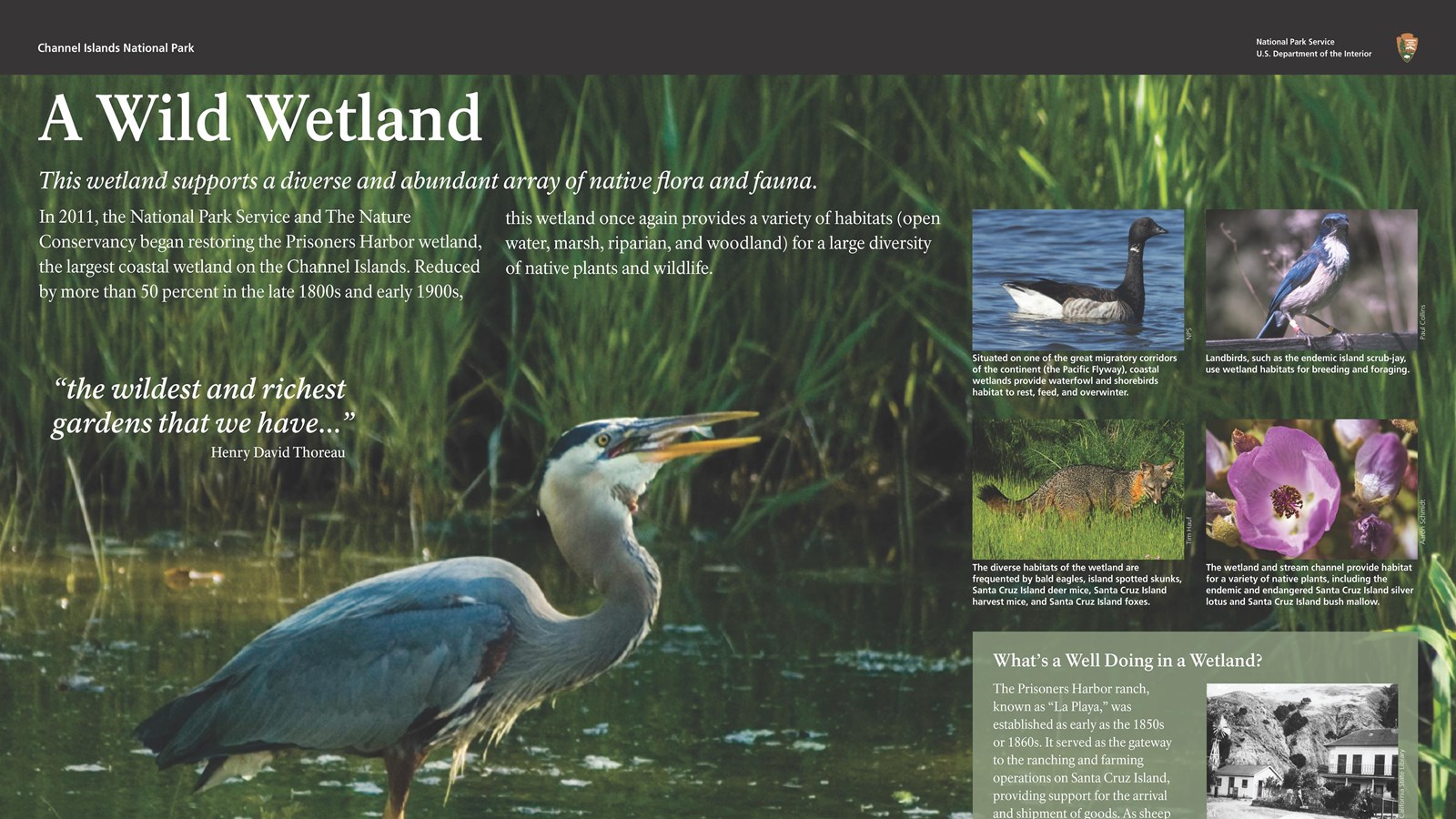Last updated: May 6, 2021
Place
Sign: A Wild Wetland

Information
"the wildest and richest gardens that we have..." Henry David Thoreau
This wetland supports a diverse and abundant array of native flora and fauna.
In 2011, the National Park Service and The Nature Conservancy began restoring the Prisoners Harbor wetland, the largest coastal wetland on the Channel Islands. Reduced by more than 50 percent in the late 1800s and early 1900s, this wetland once again provides a variety of habitats (open water, marsh, riparian, and woodland) for a large diversity of native plants and wildlife.
Image Captions
Situated on one of the great migratory corridors of the continent (the Pacific Flyway), coastal wetlands provide waterfowl and shorebirds habitat to rest, feed, and overwinter.
Landbirds, such as the endemic island scrub-jay, use wetland habitats for breeding and foraging.
The diverse habitats of the wetland are frequented by bald eagles, island spotted skunks,Santa Cruz Island deer mice, Santa Cruz Island harvest mice, and Santa Cruz Island foxes.
The wetland and stream channel provide habitat for a variety of native plants, including the endemic and endangered Santa Cruz Island silver lotus and Santa Cruz Island bush mallow.
What's a Well Doing in a Wetland?
The Prisoners Harbor ranch, known as "La Playa," was established as early as the 1850s or 1860s. It served as the gateway to the ranching and farming operations on Santa Cruz Island, providing support for the arrival and shipment of goods. As sheep ranching on the island expanded, the ranch grew to include a pier, corrals, warehouse, ranch house, barns, and outbuildings. A windmill once stood over the well before you and pumped water to a tank on the hillside to supply fresh water for the ranch house and livestock.
The hand-dug well is approximately 25 feet in depth and lined with stone. The wetland restoration helps protect this and other historic structures from erosion and flooding.
